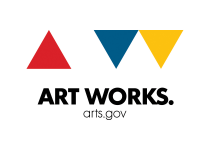Francisco Perez-Figueroa will be displaying his black and white photography of street performers in the Canyon Community Center (126 Lion Blvd., Springdale) Gallery from August 25th through October 2nd. The Artist Reception will include live music and refreshments and be held on September 18th from 5:30 to 7:30 pm.
Gallery Hours:
Monday – Thursday 10am to 7pm
Friday 10am to 5pm
Saturday 12 noon to 5pm
Street performance or busking is the act of performing in public places for gratuities, though “busking” is particularly associated with singing or playing music. In many countries the rewards are generally in the form of money but other gratuities such as food, drink or gifts may be given. Street performance is practiced all over the world by men, women and children and dates back to antiquity. People engaging in this practice are called street performers or buskers.
The place where a performance occurs is called a “pitch”. A good pitch can be the key to success as a busker. An act that might make money at one place and time may not work at all in another setting. Popular pitches tend to be public places with large volumes of pedestrian traffic, high visibility, low background noise and as few elements of interference as possible.
In her book, Underground Harmonies: Music and Politics in the Subways of New York, Susie J. Tanenbaum examined how the adage “Music hath charms to soothe the savage beast” plays out in regards to busking. Her sociological studies showed that in areas where buskers regularly perform, crime rates tended to go down, and that those with higher education attainment tended to have a more positive view of buskers than did those of lesser educational attainment.
In the 2000s, some performers have begun “Cyber Busking”. Artists post work or performances on the Internet for people to download or “stream” and if people like it they make a donation using PayPal.
Well Known Street Performers:
Rod Stewart began hanging around folk singer Wizz Jones and busking, at Leicester Square and other London spots in 1962. On several trips over the next 18 months, Jones and Stewart took their act to Brighton and then to Paris, sleeping under bridges over the River Seine, and then finally to Barcelona. Stewart was eventually rounded up and deported from Spain for vagrancy in 1963.
George Michael used to busk near the London Underground, performing songs such as ’39 by Queen.
Benjamin Franklin, the American inventor and statesman, was a street performer. He composed songs, poetry and prose about the current events and went out in public and performed them. He would then sell printed copies of them to the public. He was dissuaded from busking by this father who convinced him it was not worth the stigmas that some people attach to it. It was this experience that helped form his beliefs in free speech, which he wrote about in his journals.
The first recorded instances of laws affecting buskers were in ancient Rome in 462 BC. The Law of the Twelve Tables made it a crime to sing about or make parodies of the government or its officials in public places; the penalty was death.In the United States under Constitutional Law and most European common law, the protection of artistic free speech extends to busking.
 |
This project is supported by Utah Arts and Museums, with funding from the State of Utah and the National Endowment for the Arts . |
 |
Support for this event provided by The National Endowment for the Arts - Art Works |

